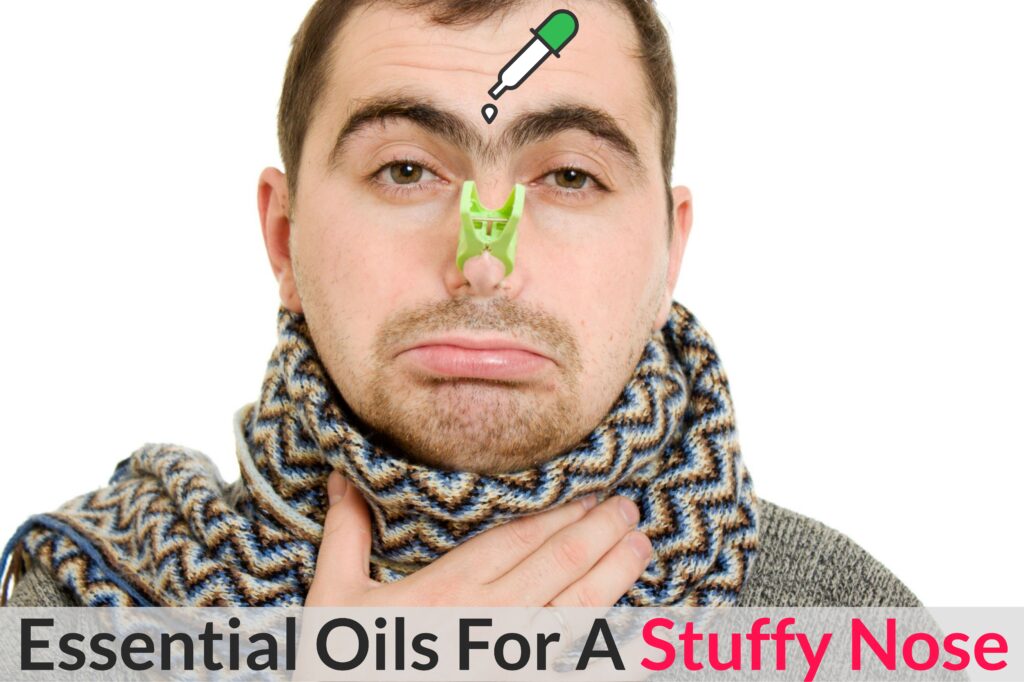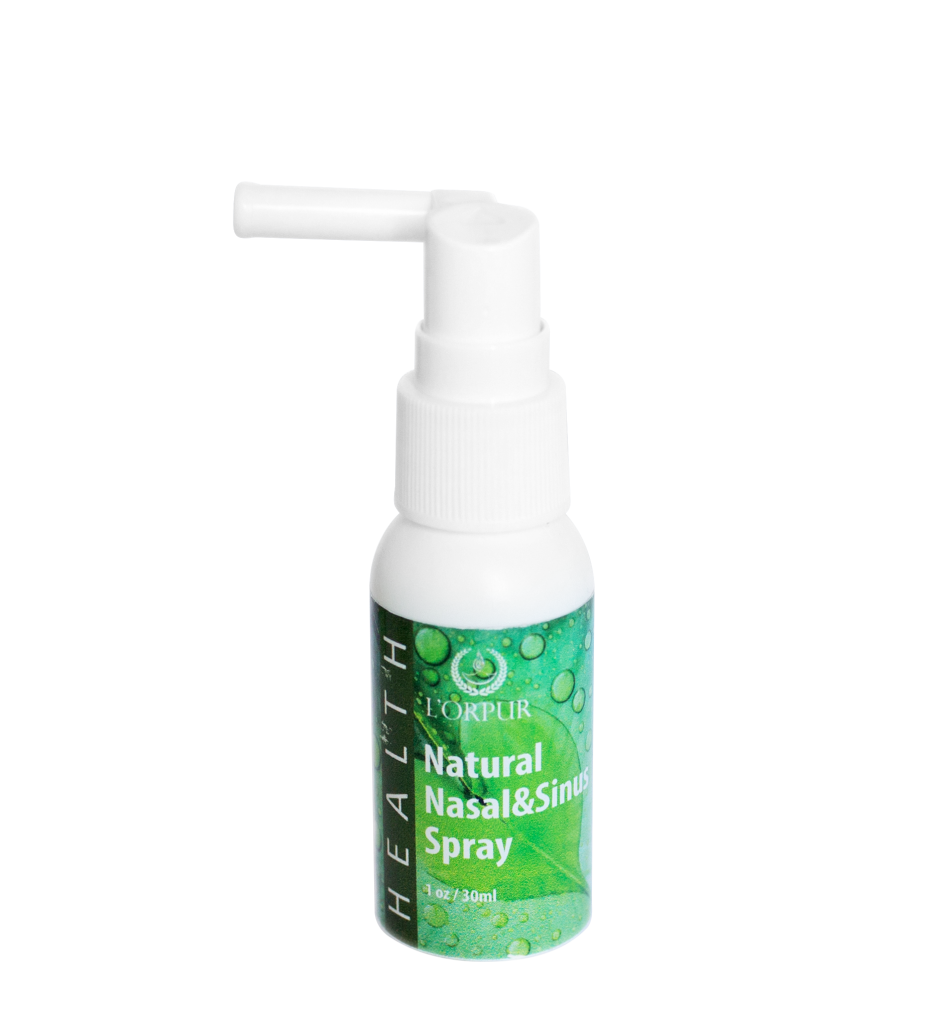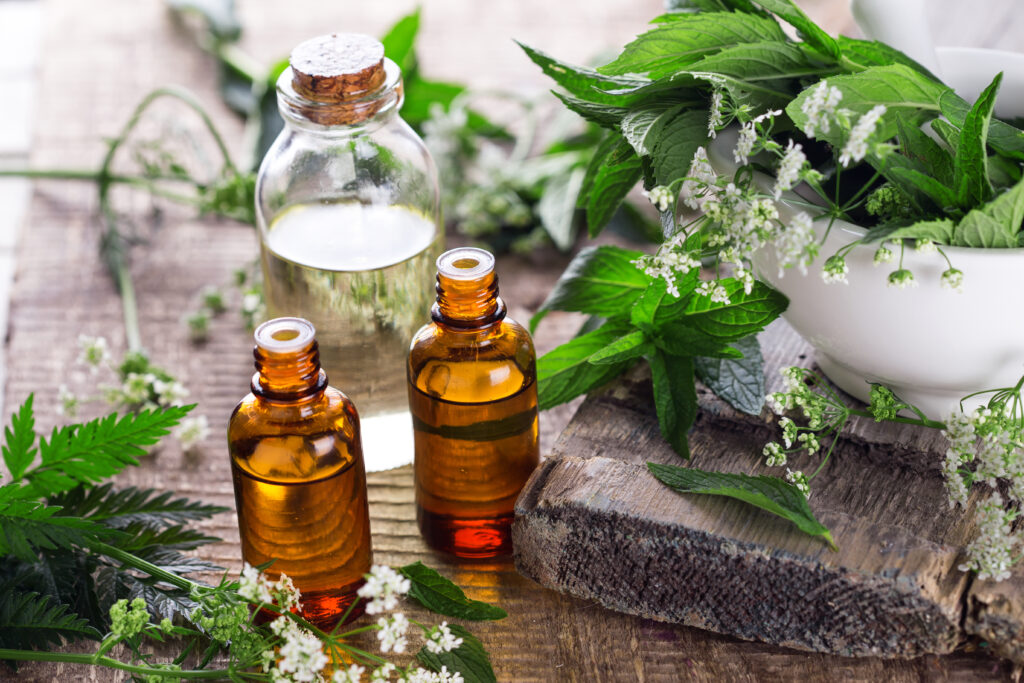Despite playing an important role in the respiratory process, the nose rarely gets the credit it deserves. A true, unsung hero, it slogs all through the day and even when you are slumbering. In terms of work, it handles everything from aromas to stenches, from oxygen to carbon dioxide and from boogers to bacteria.
Yet, we take a vain view when thinking about the organ and only rant about its looks. I’d go so far to say that with the humble schnozzle, it is a classic case of – You don’t know what you’ve got till it’s gone! But you are forced to pay attention to your nose once it shuts shop.
Why you wonder when we have a larger orifice to breathe through?
Well, even though your snout cannot hold a candle to your trap in terms of size, the truth is that your mouth was never designed for breathing. Simply put, it was always just the spare.
I mean those nostrils seem puny in comparison to your mouth but they are tiny filters and humidifiers, which means breathing through the nose is really the best thing to do. But, what happens when your schnozzle is held hostage by a plug of snot?
Well, you just need to give it some TLC and the “T” in that stands for both tough love and tender love and if you don’t know how to combine tough with tender that is what good ol’ Olivia is here for.
Hi there folks, I am happy to have you onboard for another adventure through the world of essential oils.
I am your captain and today we are going to navigate our way through all those vexing nose troubles. You wanted it, and you shall have it – Olivia’s Ultimate Guide to Using Essential Oils to Treat a Stuffy Nose.
But before I show you how to release your nose from the clutches of the snot monster, let us talk about how and why your schnoz lands itself in trouble.
Why Do I Have A Stuffy Nose? It’s Not Like I Shove Dirt And Debris Up Those Nostrils!
For most people, it is hard to understand how an organ that exclusively handles air can get all clogged up. Blame it on the snot!
Remember the part about your nose playing the role of a humidifier, from where do you think that humidity comes? Yessiree, it comes courtesy of the slimy, yucky stuff that we derisively dismiss as snot.
Together with your sinuses, your nose produces between 0.5-1 liter of snot each day. What becomes of all that mucus?
It is first channeled to the nasal cavity and from there the tiny hair inside your nostrils push it towards the passage that connects your nose to your throat. From the throat, the snot makes its way into your tummy.
I know guys that is one hell of a yucky mental image, but here is the deal – You need the snot to keep your respiratory organs, including your nose and throat in top shape. So, we just have to shut up and continue swallowing the mucus as we have been doing since the very day we were born.
Normally, this whole system is perfectly tuned. So, the supply and demand are in near equilibrium. The problem starts when a spanner comes flying in the works, like an allergen or a microorganism (bacteria, fungus or virus).
In both cases, your immune system immediately gets involved and releases histamines. Call this the clean-out chemical of your body because it will make your organs do whatever is required to push the intruders out.
In case of the nose, this involves the itchy feel that leads to incessant bouts of sneezing and hyper production of mucus. All that sneezing irritates the lining of your nostrils, which causes inflammation.
Then your body brings in the heavy artillery in the form of white blood cells. Your body’s defenders launch a serious attack on the outsiders. Sometimes this kills the enemy and sometimes it does not, but it always causes collateral damage in the form of more inflammation.
In the midst of the mayhem, the mucus lining continues to produce snot like there is no tomorrow. But with the channels that control the flow of the snot all blocked, the fluid has nowhere to go.
It thickens and clogs up the nasal cavity and that is how you end up with a nose that is more stuffed than any Thanksgiving turkey ever.
In itself, a stuffy nose is not a condition but a symptom. Usually, the underlying health issue is the inflammation or the swelling of the mucosal lining and a simultaneous increase in mucus secretion.
Medically, the condition is known as rhinitis and it is the leading cause of a stuffy nose. However, nasal congestion can also be attributed to other conditions, more on that coming up in a bit.
You and all those around you will know you have a stuffy nose!
It is not every day that your attempt to inhale sounds like you are trying to start a rickety car that just does not yield to your ministrations or that you go about sniffling like a toddler or that your red nose is ready to put ol’ Rudolph out of business.
Really, a stuffy nose is as unmistakable as a clogged drain. So, we don’t really have to discuss what a stuffy nose feels like because most of us have firsthand experience with this problem.
However, what does deserve attention are the other symptoms that typically come along with the stuffy nose.
These point to the cause of the problem. So, they help you in devising a treatment strategy. The symptoms you experience along with nasal congestion will also offer an indication of just how serious the problem is and if there is a risk of complications.
Usually, you will experience one or more of these symptoms with a stuffy nose:
- Runny nose
- Sneezing
- Headache
- Itchiness in the nose and throat
- Itchy eyes
- Red and watery eyes
- Difficulty breathing
- Sinus pain
- Cough
- Fever
- Breathing trouble
- Sudden and loud snoring
- Pain behind the eyes, cheeks and forehead
- Sore throat
- Fatigue
- Feeling of malaise
- Thick and green/yellow mucus discharge
Now, let me tell you what these symptoms convey. If blowing your nose covers the tissue with yellow/green and viscous snot, you are dealing with an infection.
But, it could be either bacterial, viral, or in some cases, fungal. If you have an itchy nose and eyes, swelling around the eyes, itching in the throat or ear and watery eyes, the chances are that your problems are attributed to an allergy.
If you have tenderness in the cheeks, the forehead, behind the eyes, your body is probably battling sinusitis. If you have significant phlegm discharge (also viscous and yellow/green) and frequent bouts of coughing, the infection has spread to the lungs.
Fortunately, all of these conditions are treatable and yes, they can easily be managed by using essential oils. But since prevention is always better than cure, we need to know a bit more about the causes of a stuffy nose.
So, What Causes Your Nose To Reach The Unyielding, Obstinate And Stuffed Up Stage?
Infections: Whether the attack is launched by bacteria, fungus or virus, it will put your immune system into hyper drive and cause a stuffy nose along with a headache, and possibly fever. The common cold and the flu are both viral infections that cause all of these symptoms.
However, when you have the flu, you will run a high fever and experience intense fatigue and body pain along with the other symptoms. On the other hand, bacterial infections of the upper respiratory tract will lead to coughing and discharge of phlegm along with a runny nose, congestion, headache and more.
Sinusitis: This refers to the inflammation of the mucus lining of the sinus cavities. Again, an infection or an allergy is usually to be blamed for the inflammation. As the lining swells, it blocks the flow of mucus out of the sinuses, which leads to pain, heightened inflammation and eventual infection.
Allergies: While pollen is usually the culprit in allergy attacks, your immune system may react just as violently to the presence of dust mites, flour, wood dust, certain plants, pet hair and dander and other allergens.
Regardless of the irritant, your immune response to it will cause the all too familiar and notorious allergy symptoms such as a stuffy nose, sneezing, nasal and optical itching and others.
Physical blocks: Nasal polyps are abnormal, fleshy growths in the nasal cavity that can hinder the drainage of mucus from the sinuses to the nose and from the nasal cavity into the throat, thus leading to nasal congestion.
Any kind of nasal injury or structural difference leads to a similar effect. For instance, a deviated septum as well as broken nose can cause frequent sinus and nasal congestion.
Medication: Some drugs are known to cause what is called rhinitis medicamentosa, or in simpler words, an inflammation of the mucus lining attributed to a drug reaction.
Beta blockers, certain painkillers and even some decongestants (nasal sprays when used for more than 3 days) are known to cause rhinitis and consequently nasal congestion.
Swollen adenoid glands: Usually these glands shrink by the time you hit adolescence, but if they don’t, their position in the back of the nasal cavity turn them into prime troublemakers. Frequent bouts of nasal congestion and a runny nose are hallmark signs of swollen adenoids.
Medical conditions: Thyroid disorders and an ailment called the Chrug-Strauss syndrome, which involves the inflammation of blood vessels, are also known to cause a stuffy nose.
Hormonal changes: Stress and pregnancy can also be the cause of nasal congestion in some people, as they are responsible for significant hormonal changes in the body.
When Should You See A Doctor About Your Nasal Congestion?
While a stuffy nose and all the annoying symptoms that accompany it are simply immune responses to thwart invaders, you will need to see a doctor if:
- The symptoms last for more than a week.
- They do not respond to the use of OTC medication and/or natural treatment.
- The frequency and intensity of the symptoms increases.
- You develop high grade fever.
- The nasal and lung congestion make it hard to breathe.
- You have blood tinged nasal discharge.
- Your phlegm is blood-tinged.
If an infant or a child younger than 2 years has even a slight fever along with nasal congestion, you need to consult your pediatrician at once. Ditto for babies who have nasal congestion and/or a runny nose that is making it hard to nurse them, or is causing breathing difficulties.
How Do Doctors Treat The Infamous Stuffy Nose?
The treatment for a stuffy nose will depend on the underlying cause. Typically, it will include one or more of the following:
Meds to make those blood vessels behave themselves: More blood to the nasal cavity equates to greater mucus discharge. So, doctors often use alpha-adrenergic agonists as the first line of treatment to control excess mucus secretion.
These drugs constrict the blood vessels, essentially reducing the amount of blood available to the mucus lining. Phenylephrine and ozymetazoline are among the more popular drugs in this category.
Both are known to cause side effects like high blood pressure, heart rhythm/rate abnormalities, dizziness, anxiety, gastric upset, sleep problems, and skin rash among others.
OTC painkillers: Despite the fact that influenza (flu) and the common cold are both self-limiting ailments (viral infections that resolve on their own), doctors often prescribe asprin, acetaminophen and ibuprofen to ease the discomfort. The side effects of these OTC formulations are well known.
Meds for allergies: If the nasal congestion is caused by an allergy, decongestants and antihistamines are also used in the treatment plan. Both first and second generation antihistamines have several side effects, including drowsiness, stomach upsets, headache, and others.
Topical decongestants: Those that are sold in the form of OTC nasal sprays cannot be used for more than 3 days because they lead to rebound congestion (rhinitis medicamentosa, as explained above). Oral decongestants can be taken for longer, but speak to your doctor before using them for more than 7 days.
Antibiotics: These are only prescribed if the physician is sure that the infection is caused by a bacteria. Antifungal and antiviral meds can be used for other types of infection, depending on the severity of the symptoms. For a bacterial infection that causes nasal congestion, amoxicillin is the drug of choice and it is only prescribed for acute sinusitis.
Surgeries: No, you won’t have to see the insides of an operating room just because you have an unruly nose. Surgical procedures are only considered if the nasal congestion results from a structural abnormality and that too when all other treatment options have proved futile.
RECOMMENDED NATURAL PRODUCT FOR STUFFY NOSE
Do you want to get relief from a blocked nose from cold, flu, hayfever, etc. You will discover the benefits of using L’orpur Natural Nasal and Sinus Spray to ease nasal congestion and help your blocked nose.
Why Should You Use Essential Oils To Deal With A Stuffy Nose?
These potent plant extracts offer several benefits at once. For instance, the oils can address nasal congestion and the other symptoms, while battling inflammation and the underlying health condition that caused it.
Similarly, the anti-inflammatory and soothing properties of essential oils help to curb the swelling of the mucosa, while their cooling and warming action battles itchiness and irritation.
Above all, some volatile oils are known to have antihistaminic properties. Plus, there are others that boast of immune-regulatory effects. In other words, with essential oils, you can stop your immune system from overreacting without compromising its ability to defend the body.
Moreover, essential oils are the most effective and powerful antiviral, antibacterial and antifungal agents available in nature. They not only strengthen your body’s natural defense system but also offer help from the outside in defeating the intruders.
And I still haven’t got to the best part yet! Many essential oils also have impressive expectorant properties, which means they actually melt the snot clog in the nose and the sinuses. I believe that about covers all the symptoms and the causes of a stuffy nose. I can guarantee that you won’t find anything in modern medicine that offers all of that without side effects.
Best 8 Essential Oils For A Stuffy Nose
1. Ravintsara
Distilled from the leaves of the tree that is also used to get camphor crystals, this oil has exceptional mucolytic and expectorant properties that enable it to deal even with stubborn nasal blockages.
2. Peppermint
When it comes to a stuffy nose, the icy coolness of peppermint oil helps to reduce blood flow, which lowers mucus production. Less snot means less debris to clog your nasal passage. Furthermore, the extract has anti-microbial and anti-inflammatory properties that help to prevent and treat infections.
3. Eucalyptus
This warming oil offers all the benefits of peppermint but uses heat to control the inflammation.
4. Rosemary
Along with its mild heating action, rosemary oil brings forth extraordinary abilities to fight infections. Be it is a virus, bacteria or fungus, the strain won’t be able to survive once you put this oil to use.
5. Basil
Long used in the treatment of all types of pulmonary and respiratory disorders, basil can deal with infections, inflammation and the nasal congestion they cause.
6. Niaouli
Distilled from a tree that is related to the famed Melaleuca (tea tree), this oil has the same anti-bacterial and anti-inflammatory properties as its famous cousin but it is gentler on the skin. Furthermore, it also boasts of mucolytic and expectorant powers that melt away mucus plugs in the nose and in the throat.
7. Bay laurel
Another warming oil that offers expectorant properties, this extract too has a longstanding history of use against nasal congestion, cough and cold.
8. Caraway seed
This is one of the few essential oils that have antihistaminic properties, which means you can use it to fight off allergies. The extract has been tested in a clinical setting against allergens and the cascading immune response they trigger.
Apart from these, we will also use lavender and geranium essential oils for their anti-inflammatory and analgesic properties along with clove, oregano and ginger essential oils for their soothing warmth and their ability to bust through thick mucus blockages.
The 7 Best Essential Oil Recipes For A Stuffy Nose!
1. The jar of relief!
- 1-2 cups of Himalayan pink salt (depending on jar size)
- 1 wide mouth mason jar
- 10 drops each of eucalyptus and peppermint essential oils
- 5 drops each of basil and lavender essential oils
- 1 tbsp carrier oil of your choice
Method:
Measure out the salt in a large glass bowl. You will need enough to fill ½ or 2/3rd of the jar, depending on its size. Your aim should be to leave just enough room on top for you to be able to put your nose inside the jar without it touching the surface of the salt.
Blend the oils in a smaller bowl and add them to the salt a few drops at a time. Mix the salt and the essential oils with a wooden spoon. The idea is to thoroughly coat the salt crystals with the oils.
Transfer the treated salt into a mason jar. Put the jar lid back on and store the container away from direct heat and sunlight. There are two ways to use this “jar of relief”.
- Simply stick your nose into the jar and take a deep breath. If the aroma is too strong for you, hold the jar a few inches away from your nose. In time and with repeated use, the aroma will get lighter.
- Combine heat, salt and essential oils by placing the jar in a bowl that contains hot water. You don’t need boiling hot neater for this, but the temperature should be high enough to heat the salt. After about 3-4 minutes in the water-bath, take the jar out. Use as instructed above but keep your nose away from the brim of the jar as it may be hot.
In both methods, salt ions and aromatic molecules enter the nasal cavity and offer their healing and anti-inflammatory effects to the mucus lining, the sinuses and your upper respiratory tracts.
Salt rooms and essential oils are extremely effective and popular treatment options for respiratory problems. With your little mason jar, you get to harness the healing potential of both, wherever and whenever you need it.
2. Super powerful steam blend to unclog stubborn nasal congestion
- 1 tsp. mustard oil (carrier oil; do NOT use mustard essential oil)
- 1 tbsp. salt (sea salt or Himalayan pink salt)
- 2 drops each of basil, turmeric and oregano essential oils
- 1 drop each of eucalyptus and tea tree essential oils
Method:
You can buy mustard carrier/seed oil online or in specialty food stores. If you cannot find it, use a tsp. of milled mustard seeds.
Mix the essential oils with the mustard oil if using it or if you are using milled mustard seeds, mix the essential oils with a carrier oil of your choice. Set the lipid mixture aside and boil about 2-3 cups of water. Pour the boiling water into a medium sized bowl and add salt to it. Stir till the crystals dissolve and then quickly add the oil blend to the solution. If you are using milled mustard seeds, add them after the salt and then pour in the essential oil blend.
Bend your head over the bowl, keeping a distance of about 10-12 inches between the surface of the water and your face. Cover your head and the bowl with a thick towel to make a tent of sorts that will stop the steam from escaping. Breathe deeply and remember to keep your eyes closed.
The aroma may seem too strong at first. If you feel you cannot stand it for anymore, take a break by sticking your head out of the tent for a few seconds, but then go right back inside and continue the steam inhalation. For best results, continue the treatment for 10-15 minutes and do this twice a day.
3. Steam blend for an itchy, runny nose and itchy, watery eyes
- 1 tsp carrier oil of your choice
- 1 tbsp salt (sea salt or Himalayan pink salt)
- 3 drops peppermint essential oil
- 2 drops each of melissa and caraway seed essential oils
- 1 drop rosemary essential oil
Method:
Instructions as above, except for the mustard oil/seeds. Use this blend before your nose starts clogging up. In fact, go for a 10-15 minute session of steam inhalation as soon as you experience nasal discharge, itching and sneezing.
The essential oils of both melissa (lemon balm) and caraway seeds are known to have antihistaminic properties. So, they will bring the levels of histamine under control while the essential oils of peppermint and rosemary, along with the salt, will offer quick relief from inflammation and irritation.
Usually two rounds is all it takes to get noticeable results. If you already have a stuffy nose and know that allergy is to be blamed for it, alternate this blend with the one above, going for one session of each per day.
4. A massage blend to give your nose some TLC
- 30 ml carrier oil of your choice (sesame seed oil typically works the best)
- 2 drops ginger essential oil
- 3 drops each of niaouli and ravintsara essential oils
- 5 drops peppermint
- 7 drops lavender
Method:
Mix the essential oils with the carrier oil. You can blend the lipids in a small bowl and then transfer the mixture into a glass bottle or simply pour the essential oils into the bottle first and then top them with the carrier. Roll the bottle in between your palms or give it a gentle shake to ensure that the oils get mixed together.
You will need a dark colored glass bottle for storage. To use, take one or two drops in your hand and apply with your finger tips to the bridge of the nose at the root (point in between the eyebrows) and work your way down the sides of the nose till you reach the nostrils.
Massage gently with downward strokes to encourage the flow of mucus out of the nose. About 2-3 minutes of this massage, 2-3 times a day, will offer noticeable benefits. For best results, use steam inhalation to melt the mucus plug and then go for the massage to move the snot out of the nasal cavity.
5. Hot compress recipe for a stuffy nose
- 1 tbsp any carrier oil
- 3 drops thyme
- 5 drops each of wild orange, bay laurel and ravintsara essential oils
- 10 drops peppermint or menthol essential oils
Method:
You will need hot water (enough to fill a medium sized glass bowl with it) and a face wash cloth. Prepare the blend in advance and store in a dark glass bottle. Because you will only require about 3-4 drops each time, you can easily use it for 4-5 sessions.
The water should be hot enough for you to feel the soothing warmth on your skin but not so hot as to cause skin burns. Once you get the temperature right, add the oil blend to the hot water and stir briskly to disperse the lipids. You will still see tiny droplets floating on top but that is alright.
Soak the cloth in the hot water, wring it out and keep it on your face such that it covers all the sore areas and the nostrils. If for some reason, you are not comfortable placing the cloth on your face, use it to gently to pat the sides and the bridge of your nose, inhaling deeply as you do so. Continue to repeat the process till the water cools. Use this hot compress blend 2-3 times/day to get relief within 12-24 hours.
6. Bath blend for when cold/flu hits along with nasal congestion
- 1 tsp milk (plant or dairy)
- 2 drops clove oil
- 4 drops each rosemary and oregano essential oils
- 7 drops each geranium and lavender essential oils
- 2 cups Epsom salt
- 1 cup sea salt or Himalayan pink salt
Method:
In a small bowl, mix together the essential oils and the milk. Run a hot bath as you would normally and when you have the bathtub half full, add the salts to the water. Next, pour the essential oil blend right below the flow of water to ensure quick dispersion. When you have enough water for a soak, enjoy the soothing and healing goodness of the bath for 20-30 minutes.
If you have pain in the neck, throat, cheeks, forehead or a headache, dip a face wash cloth in the bath water, wring it and place it on the sore areas. While you are soaking in the bath, don’t forget to inhale the steam as a deeply as you can. The combination of the salts and the essential oils will release the mucus clog and help with the inflammation of the tissue.
7. Inhaler to control infections that lead to nasal congestion
- 3 drops cinnamon and ginger essential oils
- 5 drops each of rosemary and thyme essential oils
- 7 drops each of eucalyptus and peppermint essential oils
- 7 drops carrier oil of your choice
Method:
Mix the oils in a small glass bowl, using a glass stirrer or a toothpick. Soak the wick of the inhaler in the oils till it is completely saturated and then place it back in the body of the inhaler. Close the lid and use as you would any regular inhaler. Use this recipe when your snot goes all green/yellow and thick, which is a clear sign of infection.
Home Treatment For A Stuffy Nose
1. Wash away the mucus and the germs
Saline irrigation, with a netipot or a nose rinse bottle, helps to remove trapped mucus, allergens and germs from the nasal cavity. Plus, the combination of salt and warm water helps to bring the inflammation under control.
A solution made by dissolving a pinch of salt in a cup of warm water works well for nasal cleansing. But if you want exceptional results, replace the water with a healing hydrosol like that of lemon/chamomile/helichrysum. Two treatments a day will prove to be the most effective.
2. Eat right to feel right
You can have inflammation in any part of your body. It doesn’t matter what caused it; one thing is guaranteed, eat sugar and you will make it worse. What you eat greatly impacts your body’s ability to both defend and heal itself. So, if you are living on a steady diet of refined carbs, sugar and trans fats, you are certainly not doing your nose any favors.
If you want to get rid of nasal congestion, get serious about eating healthy. Give up colas in favor of homemade, diluted juices and snack on fresh fruits and veggies. Make sure your diet includes seafood, lean meats and whole grains to keep your body well-nourished, because that is what your nose needs to go back to being its old, unclogged self.
3. The right supplements can help
The anti-inflammatory powers of vitamin C are well known so amp up your dosage and couple it with zinc lozenges for best results. If you frequently suffer from infections or problems of the respiratory tract, you may want to look up an Ayurvedic formulation known as Chyawanprash. It combines several adaptogenic and tonic herbs that are known to boost and regulate the body’s immune system. Moreover, the spices in the recipe make the product effective against all types of respiratory disorders.
4. Sleep the sickness away
I know spending the whole day in bed, just because we are feeling a bit under the weather, is not a luxury that most of us can afford. So, go for the next best thing, and that’s 7-8 hours of shuteye at night. The more you rest, the more time you give your body to sort out its issues.
5. Beat the cold with the hot stuff
They are absolute opposites, which means that when you want to chase out one, all you have to do is use the other. In this case, “hot” refers to both temperature-hot and taste-hot. So, tomato and chicken soup spiked with tabasco, horse radish or even a dash of cayenne pepper will show that cold and your nose that you are in no mood for nonsense. Ditto for infusion teas that contain ginger, sage, mint, cinnamon and clove.
On A Parting Note…
The biggest problem of being down with a stuffy nose is that your sufferings are often dismissed with the flick of a hand and the words, “Oh, it’s just a cold”. The casual attitude makes you angry because as hard as you try to convince yourself that it’s no big deal, you simply can’t ignore a schnozzle that isn’t doing its job. The reality is that a stuffy nose embarrasses you, distracts you and makes you feel just awful.
But not anymore!
Now, you have essential oils to deal with your runny and stuffy nose and all the other symptoms that go with them. These little soldiers from Mother Nature’s cavalry will plough right through the snot block and offer relief on the double. So, expect to get back to your life not in a matter of days but hours. And on that note, here is wishing your nose a life time of clog-free days!











